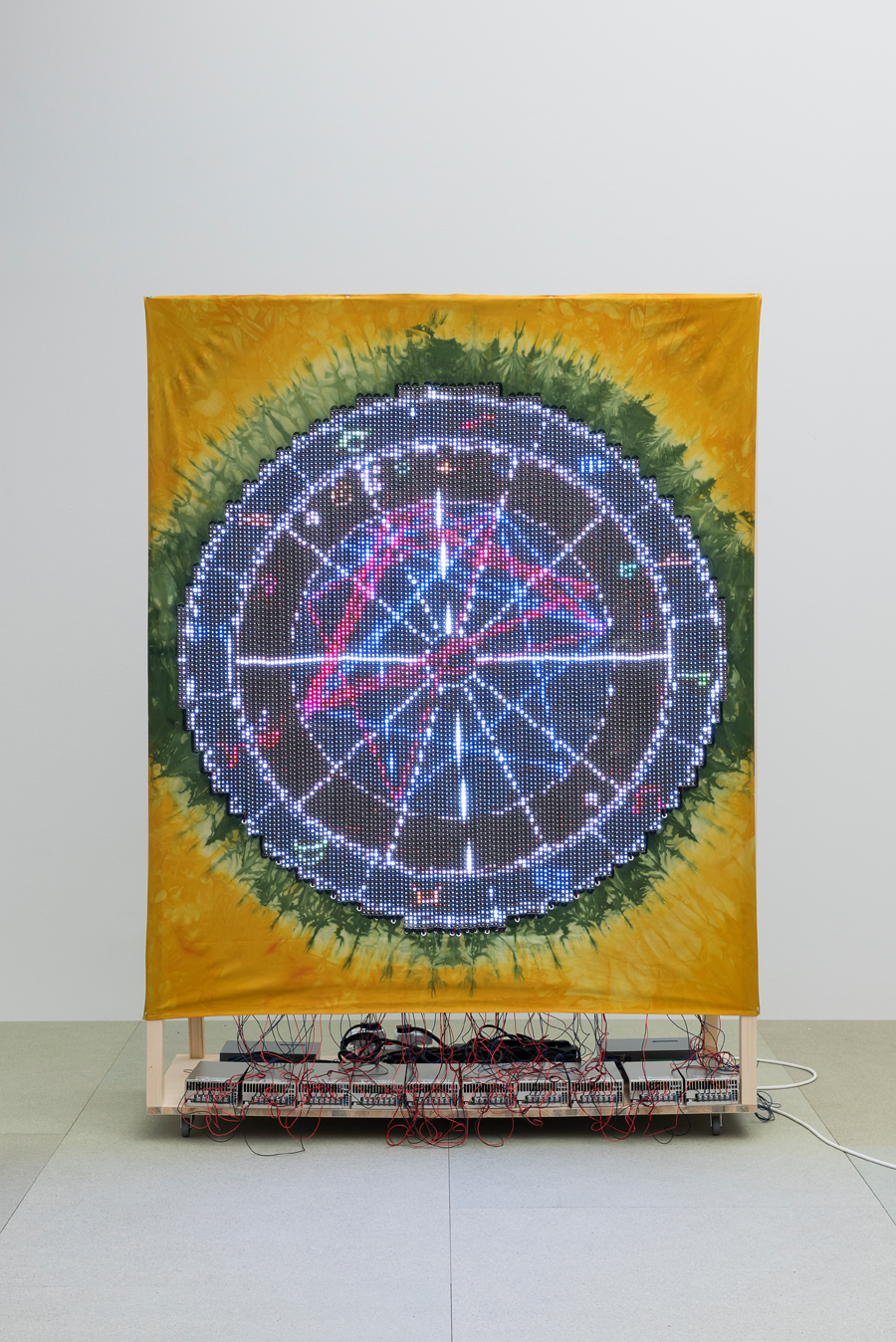Ei Arakawa's Astrology of Performance Art
At Kunstverein Düsseldorf (and on WeChat), the artist creates personalised horoscopes for a kaleidoscopic array of characters
At Kunstverein Düsseldorf (and on WeChat), the artist creates personalised horoscopes for a kaleidoscopic array of characters

‘You are tall, and have a serious look. But your whole face lights up when you smile.’ So begins section two of a personalized horoscope for Yoko Ono’s Cut Piece (1964), released on 25 May by the PerformancePeople account on the Chinese social media app WeChat. Another personality profile, addressed to Tony Conrad’s 7360 Sukiyaki (1973), reads: ‘You have a huge and kinky sexual appetite, but would never admit it unless you’re both intellectually sharing your preferences.’
Drawing on the interpretive systems of Western astrology, ‘Performance People’, Ei Arakawa’s exhibition at Kunstverein Düsseldorf, imagines a highly subjective framework to resituate not only specific points within the history of performance art, but the medium of performance itself. Billed as Arakawa’s first institutional solo exhibition, it persistently challenges the category of ‘solo’ as it churns up a kaleidoscopic array of real and fictional subjectivities. Cut Piece and 7630 Sukiyaki are just two of the 15 ‘Performance People’ included in the show: personified performances that Arakawa and his collaborators Sarah Chow and Christian Naujoks selected for their cast of characters. The roster also includes historic performance works by artists as disparate as Maryanne Amacher, Hanne Darboven, Julius Eastman, Tony Kushner and Yutaka Matsuzawa, among others. By determining the unique time and place of each piece’s ‘birth’ (where and when each was first performed), the artists were able to establish their astrological natal charts and produce personalized readings, detailing each piece’s desires, insecurities, the challenges they are likely to grapple with and the keys to overcoming them. These texts, composed by Chow, along with short radio programmes comprising musical segments by Naujoks and fictional interviews with the works themselves – who seem to phone in from afar, via tenuous connections and with foggy attention spans – are distributed throughout the show’s run via WeChat. The releases are timed in accordance with Mercury’s transits as they occur at the local time of Düsseldorf.

In contrast to the delirious network that the exhibition’s framework conjures, which sprawls eclectically through real and virtual space, across performance history and the cosmos, the large museum gallery that houses its physical components remains relatively sober. Throughout, flickering LED-infused tapestries mounted on freestanding wooden frames beam images of the works’ birth charts. Against the various esoteric flows, these objects feel like anchors or illuminated beacons, even as their wheeling bases suggest that they, too, could shift position at any time.

Misinterpretive strategies play a substantial role as well. A prime example lies in the show’s title, which, in Arakawa’s telling in an introductory text, arose when a friend made a derogatory remark about ‘performance people’ stealing, of late, all the exhibition opportunities away from other artists. In an incisive shift of emphasis, Arakawa twists the snub out of the realm of intended meaning and into the bizarrely poetic (performance people), unleashing the peculiar, cumbersome yet energetic fantasy that forms the basis of the show. Shifts of emphasis as gateways to radical re-interpretation might in fact serve as the exhibition’s M.O. Consider to that end the way that ‘Performance People’, as a thought experiment, recasts the temporality of performance. According to its logic, these performances as durational entities can no longer be limited to the time of their execution; rather, the performances themselves become only one moment in a weird, karmic existence that began well before ‘birth’ and will continue indefinitely after. In this scenario, all the works move together through time and can be ‘read’ at any point in direct relation to one another. As the artists perform their eccentric re-readings of the ‘Performance People’, tracing their resonances, connections, compatibilities or repulsions, they bring the audience into an awkward hypothetical space, one that exists outside the linearity of Western art history’s traditional accounts.
‘Ei Arawaka: Performance People’ runs at Kunstverein Düsseldorf until 5 August.
Main image: Ei Arakawa, Performance People (Angels In America, 14. April 1989, 19.30 Uhr, San Francisco), 2018, (detail). Courtesy: Kunstverein Düsseldorf: photograph: Katja Illner
























